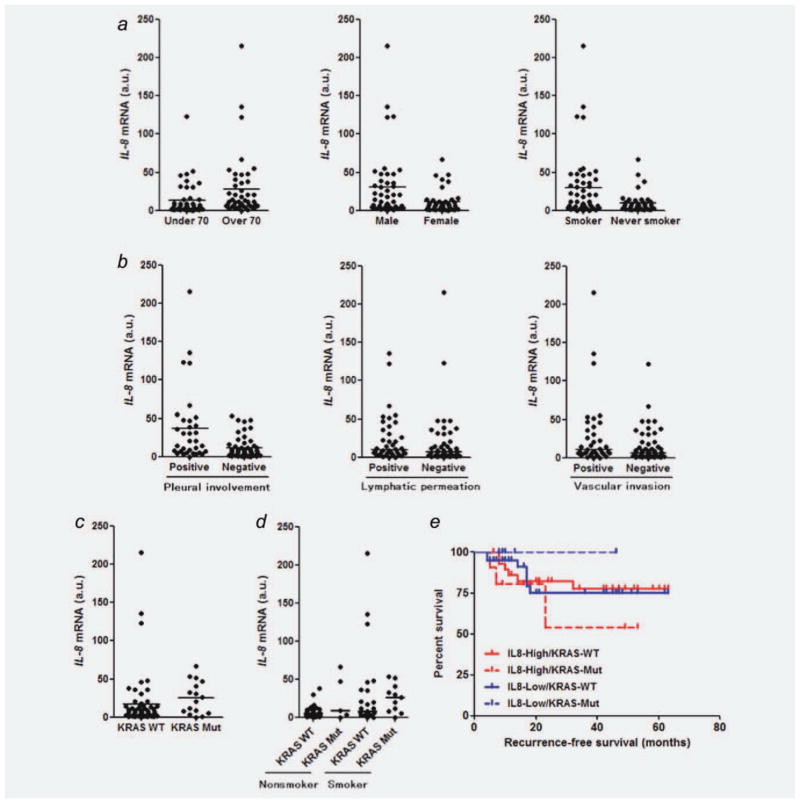Figure 3.
(a) Comparisons of IL-8 mRNA expression levels between patients with NSCLC under the age of 70 and those over 70 years old (p = 0.0016), males and females (p = 0.0056), smokers and nonsmokers (p = 0.007); (b) NSCLC specimens with or without pleural involvement (p = 0.0003), NSCLC specimens with or without lymphatic permeation (p = 0.0871), NSCLC specimens with or without vascular invasion (p = 0.054); (c) adenocarcinoma specimens with or without KRAS mutations (p = 0.0355). IL-8 expression levels in NSCLC surgical specimens were normalized to the mean (= 1 a.u.) of values obtained from five different noncancerous lung tissues. Points represent the mean IL-8 levels obtained from three independent experiments. Lines represent median IL-8 levels in each group. Differences were analyzed by Mann–Whitney test. (d) Comparison of IL-8 mRNA expression among the four groups of KRAS wild-type/nonsmoker, KRAS mutant/nonsmoker, KRAS wild-type/smoker and KRAS mutant/smoker (the median levels of these groups were 5.9, 9.2, 8.7, and 26.3, respectively; p = 0.0279 by Kruskal–Wallis test). (e) Kaplan–Meier analysis of disease-free survival (month) for NSCLC patients who were divided according to the IL-8 expression levels and KRAS mutation status. KRAS-WT: KRAS wild-type; KRAS-Mut: KRAS mutation; IL8-High: ≤7.5 a.u.; IL8-Low: >7.5 a.u. Note that the median IL-8 level of all NSCLC tumor specimens was 7.5 a.u.

